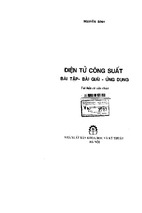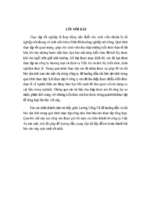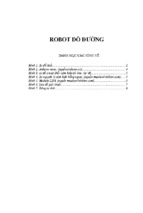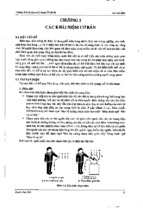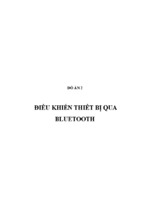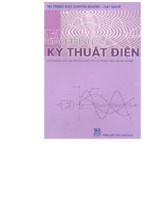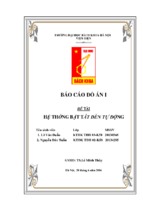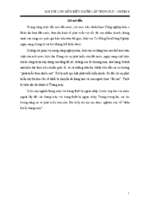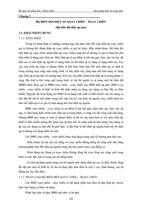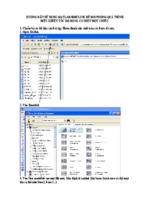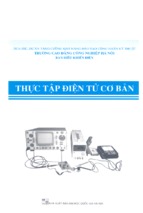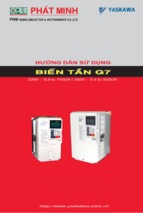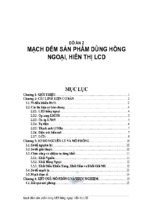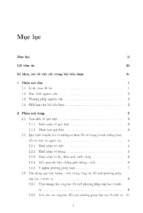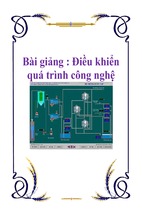Robot Mechanisms
and Mechanical
Devices Illustrated
Paul E. Sandin
McGraw-Hill
New York | Chicago | San Francisco | Lisbon | London | Madrid
Mexico City | Milan | New Delhi | San Juan | Seoul | Singapore | Sydney | Toronto
Copyright © 2003 by The McGraw-Hill Companies, Inc. All rights reserved. Manufactured in the United States of America.
Except as permitted under the United States Copyright Act of 1976, no part of this publication may be reproduced or distributed in any form or by any means, or stored in a database or retrieval system, without the prior written permission of the
publisher.
0-07-142928-X
The material in this eBook also appears in the print version of this title: 0-07-141200-X
All trademarks are trademarks of their respective owners. Rather than put a trademark symbol after every occurrence of a
trademarked name, we use names in an editorial fashion only, and to the benefit of the trademark owner, with no intention
of infringement of the trademark. Where such designations appear in this book, they have been printed with initial caps.
McGraw-Hill eBooks are available at special quantity discounts to use as premiums and sales promotions, or for use in corporate training programs. For more information, please contact George Hoare, Special Sales, at
[email protected] or (212) 904-4069.
TERMS OF USE
This is a copyrighted work and The McGraw-Hill Companies, Inc. (“McGraw-Hill”) and its licensors reserve all rights in
and to the work. Use of this work is subject to these terms. Except as permitted under the Copyright Act of 1976 and the
right to store and retrieve one copy of the work, you may not decompile, disassemble, reverse engineer, reproduce, modify,
create derivative works based upon, transmit, distribute, disseminate, sell, publish or sublicense the work or any part of it
without McGraw-Hill’s prior consent. You may use the work for your own noncommercial and personal use; any other use
of the work is strictly prohibited. Your right to use the work may be terminated if you fail to comply with these terms.
THE WORK IS PROVIDED “AS IS”. McGRAW-HILL AND ITS LICENSORS MAKE NO GUARANTEES OR WARRANTIES AS TO THE ACCURACY, ADEQUACY OR COMPLETENESS OF OR RESULTS TO BE OBTAINED FROM
USING THE WORK, INCLUDING ANY INFORMATION THAT CAN BE ACCESSED THROUGH THE WORK VIA
HYPERLINK OR OTHERWISE, AND EXPRESSLY DISCLAIM ANY WARRANTY, EXPRESS OR IMPLIED,
INCLUDING BUT NOT LIMITED TO IMPLIED WARRANTIES OF MERCHANTABILITY OR FITNESS FOR A PARTICULAR PURPOSE. McGraw-Hill and its licensors do not warrant or guarantee that the functions contained in the work
will meet your requirements or that its operation will be uninterrupted or error free. Neither McGraw-Hill nor its licensors
shall be liable to you or anyone else for any inaccuracy, error or omission, regardless of cause, in the work or for any damages resulting therefrom. McGraw-Hill has no responsibility for the content of any information accessed through the work.
Under no circumstances shall McGraw-Hill and/or its licensors be liable for any indirect, incidental, special, punitive, consequential or similar damages that result from the use of or inability to use the work, even if any of them has been advised
of the possibility of such damages. This limitation of liability shall apply to any claim or cause whatsoever whether such
claim or cause arises in contract, tort or otherwise.
DOI: 10.1036/007142928X
For Vicky, Conor, and Alex
This page intentionally left blank.
For more information about this title, click here.
Contents
Introduction
xi
Acknowledgments
Chapter 1
Motor and Motion Control Systems
Introduction
Merits of Electric Systems
Motion Control Classification
Closed-Loop System
Trapezoidal Velocity Profile
Closed-Loop Control Techniques
Open-Loop Motion Control Systems
Kinds of Controlled Motion
Motion Interpolation
Computer-Aided Emulation
Mechanical Components
Electronic System Components
Motor Selection
Motor Drivers (Amplifiers)
Feedback Sensors
Installation and Operation of the System
Servomotors, Stepper Motors, and Actuators for
Motion Control
Permanent-Magnet DC Servomotors
Brush-Type PM DC Servomotors
Disk-Type PM DC Motors
Cup- or Shell-Type PM DC Motors
Position Sensing in Brushless Motors
Brushless Motor Advantages
Brushless DC Motor Disadvantages
Characteristics of Brushless Rotary Servomotors
Linear Servomotors
xxxv
1
3
4
5
5
7
8
9
9
10
10
11
15
16
18
19
20
20
21
22
23
24
29
30
31
31
31
v
Copyright © 2003 by The McGraw-Hill Companies, Inc. Click here for Terms of Use.
vi
Contents
Commutation
Installation of Linear Motors
Advantages of Linear vs. Rotary Servomotors
Coil Assembly Heat Dissipation
Stepper Motors
Permanent-Magnet (PM) Stepper Motors
Variable Reluctance Stepper Motors
Hybrid Stepper Motors
Stepper Motor Applications
DC and AC Motor Linear Actuators
Stepper-Motor Based Linear Actuators
Servosystem Feedback Sensors
Rotary Encoders
Incremental Encoders
Absolute Encoders
Linear Encoders
Magnetic Encoders
Resolvers
Tachometers
Linear Variable Differential Transformers (LVDTs)
Linear Velocity Transducers (LVTs)
Angular Displacement Transducers (ATDs)
Inductosyns
Laser Interferometers
Precision Multiturn Potentiometers
Solenoids and Their Applications
Solenoids: An Economical Choice for Linear or Rotary Motion
Technical Considerations
Open-Frame Solenoids
C-Frame Solenoids
Box-Frame Solenoids
Tubular Solenoids
Rotary Solenoids
Rotary Actuators
Actuator Count
Debugging
Reliability
Cost
Chapter 2
Belts
Indirect Power Transfer Devices
34
35
36
37
37
38
38
38
40
41
42
43
43
44
46
47
48
49
51
53
55
55
57
57
59
60
60
62
63
63
63
64
64
66
67
67
68
68
69
72
Contents
Flat Belts
O-Ring Belts
V-Belts
Timing Belts
Smoother Drive Without Gears
Plastic-and-Cable Chain
Chain
Ladder Chain
Roller Chain
Rack and Pinion Chain Drive
Timing or Silent Chain
Friction Drives
Cone Drive Needs No Gears Or Pulleys
Gears
Gear Terminology
Gear Dynamics Terminology
Gear Classification
Worm Gears
Worm Gear with Hydrostatic Engagement
Controlled Differential Drives
Twin-Motor Planetary Gears Provide Safety Plus Dual-Speed
Harmonic-Drive Speed Reducers
Advantages and Disadvantages
Flexible Face-Gears Make Efficient High-Reduction Drives
High-Speed Gearheads Improve Small Servo Performance
Simplify the Mounting
Cost-Effective Addition
Chapter 3
Direct Power Transfer Devices
Couplings
Methods for Coupling Rotating Shafts
Ten Universal Shaft Couplings
Hooke’s Joints
Constant-Velocity Couplings
Coupling of Parallel Shafts
Ten Different Splined Connections
Cylindrical Splines
Face Splines
Torque Limiters
Ten Torque-Limiters
One Time Use Torque Limiting
73
73
73
75
76
77
79
80
80
82
82
83
84
85
87
88
88
90
90
93
95
96
99
100
102
102
104
107
109
110
114
114
115
117
118
118
120
121
121
125
vii
viii
Contents
Chapter 4
Wheeled Vehicle Suspensions and Drivetrains
Wheeled Mobility Systems
Why Not Springs?
Shifting the Center of Gravity
Wheel Size
Three-Wheeled Layouts
Four-Wheeled Layouts
All-Terrain Vehicle with Self-Righting and Pose Control
Six-Wheeled Layouts
Eight-Wheeled Layouts
Chapter 5
Steering History
Steering Basics
The Next Step Up
Chapter 7
130
130
131
134
136
141
144
150
155
Tracked Vehicle Suspensions and Drive Trains 161
Steering Tracked Vehicles
Various Track Construction Methods
Track Shapes
Track Suspension Systems
Track System Layouts
One-Track Drive Train
Two-Tracked Drive Trains
Two-Tracked Drive Trains with Separate Steering Systems
Four-Tracked Drive Trains
Six-Tracked Drive Trains
Chapter 6
127
167
168
171
174
178
178
179
180
181
184
187
190
193
Walkers
199
Leg Actuators
Leg Geometries
Walking Techniques
Wave Walking
Independent Leg Walking
Frame Walking
Roller-Walkers
Flexible Legs
202
203
208
208
208
211
214
214
Contents
Chapter 8
Pipe Crawlers and Other Special Cases
Horizontal Crawlers
Vertical Crawlers
Traction Techniques for Vertical Pipe Crawlers
Wheeled Vertical Pipe Crawlers
Tracked Crawlers
Other Pipe Crawlers
External Pipe Vehicles
Snakes
Chapter 9
Comparing Locomotion Methods
What Is Mobility?
The Mobility System
Size
Efficiency
The Environment
Thermal
Ground Cover
Topography
Obstacles
Complexity
Speed and Cost
The Mobility Index Comparison Method
The Practical Method
Explain All This Using the Algebraic Method
Chapter 10
Manipulator Geometries
Positioning, Orienting, How Many Degrees of Freedom?
E-Chain
Slider Crank
Arm Geometries
Cartesian or Rectangular
Cylindrical
Polar or Spherical
The Wrist
Grippers
Passive Parallel Jaw Using Cross Tie
Passive Capture Joint with Three Degrees of Freedom
217
220
221
222
223
224
224
226
226
227
229
229
230
231
232
232
233
233
234
235
235
236
236
237
239
241
243
243
245
246
247
248
250
252
255
256
ix
x
Contents
Industrial Robots
Industrial Robot Advantages
Trends in Industrial Robots
Industrial Robot Characteristics
Chapter 11
Proprioceptive and Environmental Sensing
Mechanisms and Devices
Industrial Limit Switches
Layouts
Combination Trip (Sense) and Hard Stop
By-Pass Layouts
Reversed Bump
Bumper Geometries and Suspensions
Simple Bumper Suspension Devices
Three Link Planar
Tension Spring Star
Torsion Swing Arm
Horizontal Loose Footed Leaf Spring
Sliding Front Pivot
Suspension Devices to Detect Motions in All Three Planes
Conclusion
Index
258
259
259
261
263
270
276
277
278
279
280
282
283
284
284
285
286
287
289
291
Introduction
T
his book is meant to be interesting, helpful, and educational to hobbyists, students, educators, and midlevel engineers studying or
designing mobile robots that do real work. It is primarily focused on
mechanisms and devices that relate to vehicles that move around by
themselves and actually do things autonomously, i.e. a robot. Making a
vehicle that can autonomously drive around, both indoors and out,
seems, at first, like a simple thing. Build a chassis, add drive wheels,
steering wheels, a power source (usually batteries), some control code
that includes some navigation and obstacle avoidance routines or some
other way to control it, throw some bump sensors on it, and presto! a
robot.
Unfortunately, soon after these first attempts, the designer will find
the robot getting stuck on what seem to be innocuous objects or bumps,
held captive under a chair or fallen tree trunk, incapable of doing anything useful, or with a manipulator that crushes every beer can it tries to
pick up. Knowledge of the mechanics of sensors, manipulators, and the
concept of mobility will help reduce these problems. This book provides
that knowledge with the aid of hundreds of sketches showing drive layouts and manipulator geometries and their work envelope. It discusses
what mobility really is and how to increase it without increasing the size
of the robot, and how the shape of the robot can have a dramatic effect on
its performance. Interspersed throughout the book are unusual mechanisms and devices, included to entice the reader to think outside the box.
It is my sincere hope that this book will decrease the time it takes to produce a working robot, reduce the struggles and effort required to achieve
that goal, and, therefore, increase the likelihood that your project will be
a success.
Building, designing, and working with practical mobile robots
requires knowledge in three major engineering fields: mechanical, electrical, and software. Many books have been written on robots, some
focusing on the complete robot system, others giving a cookbook
approach allowing a novice to take segments of chapters and put together
xi
Copyright © 2003 by The McGraw-Hill Companies, Inc. Click here for Terms of Use.
xii
Introduction
a unique robot. While there are books describing the electric circuits
used in robots, and books that teach the software and control code for
robots, there are few that are focused entirely on the mechanisms and
mechanical devices used in mobile robots.
This book intends to fill the gap in the literature of mobile robots by
containing, in a single reference, complete graphically presented information on the mechanics of a mobile robot. It is written in laymen’s language and filled with sketches so novices and those not trained in
mechanical engineering can acquire some understanding of this interesting field. It also includes clever schemes and mechanisms that mid-level
mechanical engineers should find new and useful. Since mobile robots
are being called on to perform more and more complex and practical
tasks, and many are now carrying one or even two manipulators, this
book has a section on manipulators and grippers for mobile robots. It
shows why a manipulator used on a robot is different in several ways
from a manipulator used in industry.
Autonomous robots place special demands on their mobility system
because of the unstructured and highly varied environment the robot
might drive through, and the fact that even the best sensors are poor in
comparison to a human’s ability to see, feel, and balance. This means the
mobility system of a robot that relies on those sensors will have much
less information about the environment and will encounter obstacles that
it must deal with on its own. In many cases, the microprocessor controlling the robot will only be telling the mobility system “go over there”
without regard to what lays directly in that path. This forces the mobility
system to be able to handle anything that comes along.
In contrast, a human driver has very acute sensors: eyes for seeing
things and ranging distances, force sensors to sense acceleration, and
balance to sense levelness. A human expects certain things of an automobile’s (car, truck, jeep, HumVee, etc.) mobility system (wheels, suspension, and steering) and uses those many and powerful sensors to
guide that mobility system’s efforts to traverse difficult terrain. The
robot’s mobility system must be passively very capable, the car’s mobility system must feel right to a human.
For these reasons, mobility systems on mobile robots can be both simpler and more complex than those found in automobiles. For example,
the Ackerman steering system in automobiles is not actually suited for
high mobility. It feels right to a human, and it is well suited to higher
speed travel, but a robot doesn’t care about feeling right, not yet, at least!
The best mobility system for a robot to have is one that effectively
accomplishes the required task, without regard to how well a human
could use it.
Introduction
There are a few terms specific to mobile robots that must be defined to
avoid confusion. First, the term robot itself has unfortunately come to
have at least three different meanings. In this book, the word robot
means an autonomous or semi-autonomous mobile land vehicle that may
or may not have a manipulator or other device for affecting its environment. Colin Angle, CEO of iRobot Corp. defines a robot as a mobile
thing with sensors that looks at those sensors and decides on its own
what actions to take.
In the manufacturing industry, however, the word robot means a
reprogrammable stationary manipulator with few, if any sensors, commonly found in large industrial manufacturing plants. The third common
meaning of robot is a teleoperated vehicle similar to but more sophisticated than a radio controlled toy car or truck. This form of robot usually
has a microprocessor on it to aid in controlling the vehicle itself, perform
some autonomous or automatic tasks, and aid in controlling the manipulator if one is onboard.
This book mainly uses the first meaning of robot and focuses on
things useful to making robots, but it also includes several references to
mechanisms useful to both of the other types of robots. Robot and
mobile robot are used interchangeably throughout the book.
Autonomous, in this book, means acting completely independent of any
human input. Therefore, autonomous robot means a self-controlled, selfpowered, mobile vehicle that makes its own decisions based on inputs
from sensors. There are very few truly autonomous robots, and no
known autonomous robots with manipulators on them whose manipulators are also autonomous. The more common form of mobile robot today
is semiautonomous, where the robot has some sensors and acts partially
on its own, but there is always a human in the control loop through a
radio link or tether. Another name for this type of control structure is
telerobotic, as opposed to a teleoperated robot, where there are no, or
very few, sensors on the vehicle that it uses to make decisions. Specific
vehicles in this book that do not use sensors to make decisions are
labeled telerobotic or teleoperated to differentiate them from
autonomous robots. It is important to note that the mechanisms and
mechanical devices that are shown in this book can be applied, in their
appropriate category, to almost any vehicle or manipulator whether
autonomous or not.
Another word, which gets a lot of use in the robot world, is mobility.
Mobility is defined in this book as a drive system’s ability to deal with
the effects of heat and ice, ground cover, slopes or staircases, and to
negotiate obstacles. Chapter Nine focuses entirely on comparing drive
systems’ mobility based on a wide range of common obstacles found in
xiii
xiv
Introduction
outdoor and indoor environments, some of which can be any size (like
rocks), others that cannot (like stair cases).
I intentionally left out the whole world of hydraulics. While
hydraulic power can be the answer when very compact actuators or
high power density motors are required, it is potentially more dangerous, and definitely messier, to work with than electrically powered
devices. It is also much less efficient—a real problem for battery powered robots. There are many texts on hydraulic power and its uses. If
hydraulics is being considered in a design, the reader is referred to Industrial
Fluid Power (4 volumes) 3rd ed., published by Womack Education
Publications.
The designer has powerful tools to aid in the design process beyond
the many tricks, mechanical devices, and techniques shown in this book.
These tools include 3D design tools like SolidWorks and Pro-Engineer
and also new ways to produce prototypes of the mechanisms themselves.
This is commonly called Rapid Prototyping (RP).
NEW PROCESSES EXPAND CHOICES
FOR RAPID PROTOTYPING
New concepts in rapid prototyping (RP) have made it possible to build
many different kinds of 3D prototype models faster and cheaper than by
traditional methods. The 3D models are fashioned automatically from
such materials as plastic or paper, and they can be full size or scaleddown versions of larger objects. Rapid-prototyping techniques make use
of computer programs derived from computer-aided design (CAD)
drawings of the object. The completed models, like those made by
machines and manual wood carving, make it easier for people to visualize a new or redesigned product. They can be passed around a conference
table and will be especially valuable during discussions among product
design team members, manufacturing managers, prospective suppliers,
and customers.
At least nine different RP techniques are now available commercially,
and others are still in the development stage. Rapid prototyping models
can be made by the owners of proprietary equipment, or the work can be
contracted out to various RP centers, some of which are owned by the RP
equipment manufacturers. The selection of the most appropriate RP
method for any given modeling application usually depends on the
urgency of the design project, the relative costs of each RP process, and
Introduction
the anticipated time and cost savings RP will offer over conventional
model-making practice. New and improved RP methods are being introduced regularly, so the RP field is in a state of change, expanding the
range of designer choices.
Three-dimensional models can be made accurately enough by RP
methods to evaluate the design process and eliminate interference fits or
dimensioning errors before production tooling is ordered. If design flaws
or omissions are discovered, changes can be made in the source CAD
program and a replacement model can be produced quickly to verify that
the corrections or improvements have been made. Finished models are
useful in evaluations of the form, fit, and function of the product design
and for organizing the necessary tooling, manufacturing, or even casting
processes.
Most of the RP technologies are additive; that is, the model is made
automatically by building up contoured laminations sequentially from
materials such as photopolymers, extruded or beaded plastic, and even
paper until they reach the desired height. These processes can be used to
form internal cavities, overhangs, and complex convoluted geometries as
well as simple planar or curved shapes. By contrast, a subtractive RP
process involves milling the model from a block of soft material, typically plastic or aluminum, on a computer-controlled milling machine
with commands from a CAD-derived program.
In the additive RP processes, photopolymer systems are based on successively depositing thin layers of a liquid resin, which are then solidified by exposure to a specific wavelengths of light. Thermoplastic systems are based on procedures for successively melting and fusing solid
filaments or beads of wax or plastic in layers, which harden in the air to
form the finished object. Some systems form layers by applying adhesives or binders to materials such as paper, plastic powder, or coated
ceramic beads to bond them.
The first commercial RP process introduced was stereolithography in
1987, followed by a succession of others. Most of the commercial RP
processes are now available in Europe and Japan as well as the United
States. They have become multinational businesses through branch
offices, affiliates, and franchises.
Each of the RP processes focuses on specific market segments, taking
into account their requirements for model size, durability, fabrication
speed, and finish in the light of anticipated economic benefits and cost.
Some processes are not effective in making large models, and each
process results in a model with a different finish. This introduces an economic tradeoff of higher price for smoother surfaces versus additional
cost and labor of manual or machine finishing by sanding or polishing.
xv
xvi
Introduction
Rapid prototyping is now also seen as an integral part of the even
larger but not well defined rapid tooling (RT) market. Concept modeling
addresses the early stages of the design process, whereas RT concentrates on production tooling or mold making.
Some concept modeling equipment, also called 3D or office printers,
are self-contained desktop or benchtop manufacturing units small
enough and inexpensive enough to permit prototype fabrication to be
done in an office environment. These units include provision for the containment or venting of any smoke or noxious chemical vapors that will
be released during the model’s fabrication.
Computer-Aided Design Preparation
The RP process begins when the object is drawn on the screen of a CAD
workstation or personal computer to provide the digital data base. Then,
in a post-design data processing step, computer software slices the object
mathematically into a finite number of horizontal layers in generating an
STL (Solid Transfer Language) file. The thickness of the “slices” can
range from 0.0025 to 0.5 in. (0.06 to 13 mm) depending on the RP
process selected. The STL file is then converted to a file that is compatible with the specific 3D “printer” or processor that will construct the
model.
The digitized data then guides a laser, X-Y table, optics, or other
apparatus that actually builds the model in a process comparable to
building a high-rise building one story at a time. Slice thickness might
have to be modified in some RP processes during model building to
compensate for material shrinkage.
Prototyping Choices
All of the commercial RP methods depend on computers, but four of
them depend on laser beams to cut or fuse each lamination, or provide
enough heat to sinter or melt certain kinds of materials. The four
processes that make use of lasers are Directed-Light Fabrication (DLF),
Laminated-Object Manufacturing (LOM), Selective Laser Sintering
(SLS), and Stereolithography (SL); the five processes that do not require
lasers are Ballistic Particle Manufacturing (BPM), Direct-Shell
Production Casting (DSPC), Fused-Deposition Modeling (FDM), SolidGround Curing (SGC), and 3D Printing (3DP).
Introduction
xvii
Stereolithography (SL)
The stereolithographic (SL) process is performed on the equipment
shown in Figure 1. The movable platform on which the 3D model is
formed is initially immersed in a vat of liquid photopolymer resin to a
level just below its surface so that a thin layer of the resin covers it. The
SL equipment is located in a sealed chamber to prevent the escape of
fumes from the resin vat.
The resin changes from a liquid to a solid when exposed to the ultraviolet (UV) light from a low-power, highly focused laser. The UV laser
beam is focused on an X-Y mirror in a computer-controlled beam-shaping and scanning system so that it draws the outline of the lowest crosssection layer of the object being built on the film of photopolymer resin.
After the first layer is completely traced, the laser is then directed to
scan the traced areas of resin to solidify the model’s first cross section.
The laser beam can harden the layer down to a depth of 0.0025 to 0.0300
in. (0.06 to 0.8 mm). The laser beam scans at speeds up to 350 in./s (890
cm/s). The photopolymer not scanned by the laser beam remains a liquid. In general, the thinner the resin film (slice thickness), the higher the
resolution or more refined the finish of the completed model. When
model surface finish is important, layer thicknesses are set for 0.0050 in.
(0.13 mm) or less.
The table is then submerged under computer control to the specified
depth so that the next layer of liquid polymer flows over the first hardened layer. The tracing, hardening, and recoating steps are repeated,
layer-by-layer, until the complete 3D model is built on the platform
within the resin vat.
Figure 1 Stereolithography (SL):
A computer-controlled
neon–helium ultraviolet light
(UV)–emitting laser outlines each
layer of a 3D model in a thin liquid film of UV-curable photopolymer on a platform submerged a
vat of the resin. The laser then
scans the outlined area to solidify
the layer, or “slice.” The platform
is then lowered into the liquid to
a depth equal to layer thickness,
and the process is repeated for
each layer until the 3D model is
complete. Photopolymer not
exposed to UV remains liquid.
The model is them removed for
finishing.
xviii
Introduction
Because the photopolymer used in the SL process tends to curl or sag
as it cures, models with overhangs or unsupported horizontal sections
must be reinforced with supporting structures: walls, gussets, or
columns. Without support, parts of the model can sag or break off before
the polymer has fully set. Provision for forming these supports is
included in the digitized fabrication data. Each scan of the laser forms
support layers where necessary while forming the layers of the model.
When model fabrication is complete, it is raised from the polymer vat
and resin is allowed to drain off; any excess can be removed manually
from the model’s surfaces. The SL process leaves the model only partially polymerized, with only about half of its fully cured strength. The
model is then finally cured by exposing it to intense UV light in the
enclosed chamber of post-curing apparatus (PCA). The UV completes
the hardening or curing of the liquid polymer by linking its molecules in
chainlike formations. As a final step, any supports that were required are
removed, and the model’s surfaces are sanded or polished. Polymers
such as urethane acrylate resins can be milled, drilled, bored, and tapped,
and their outer surfaces can be polished, painted, or coated with sprayedon metal.
The liquid SL photopolymers are similar to the photosensitive UVcurable polymers used to form masks on semiconductor wafers for etching and plating features on integrated circuits. Resins can be formulated
to solidify under either UV or visible light.
The SL process was the first to gain commercial acceptance, and it
still accounts for the largest base of installed RP systems. 3D Systems of
Valencia, California, is a company that manufactures stereolithography
equipment for its proprietary SLA process. It offers the ThermoJet Solid
Object Printer. The SLA process can build a model within a volume
measuring 10 × 7.5 × 8 in. (25 × 19 × 20 cm). It also offers the SLA 7000
system, which can form objects within a volume of 20 × 20 × 23.62 in.
(51 × 51 × 60 cm). Aaroflex, Inc. of Fairfax, Virginia, manufactures the
Aacura 22 solid-state SL system and operates AIM, an RP manufacturing service.
Solid Ground Curing (SGC)
Solid ground curing (SGC) (or the “solider process”) is a multistep inline process that is diagrammed in Figure 2. It begins when a photomask
for the first layer of the 3D model is generated by the equipment shown
at the far left. An electron gun writes a charge pattern of the photomask
on a clear glass plate, and opaque toner is transferred electrostatically to
the plate to form the photolithographic pattern in a xerographic process.
Introduction
Figure 2 Solid Ground Curing (SGC): First, a photomask is generated on a glass plate by
a xerographic process. Liquid photopolymer is applied to the work platform to form a
layer, and the platform is moved under the photomask and a strong UV source that
defines and hardens the layer. The platform then moves to a station for excess polymer
removal before wax is applied over the hardened layer to fill in margins and spaces. After
the wax is cooled, excess polymer and wax are milled off to form the first “slice.” The first
photomask is erased, and a second mask is formed on the same glass plate. Masking and
layer formation are repeated with the platform being lowered and moved back and forth
under the stations until the 3D model is complete. The wax is then removed by heating
or immersion in a hot water bath to release the prototype.
The photomask is then moved to the exposure station, where it is aligned
over a work platform and under a collimated UV lamp.
Model building begins when the work platform is moved to the right
to a resin application station where a thin layer of photopolymer resin is
applied to the top surface of the work platform and wiped to the desired
thickness. The platform is then moved left to the exposure station, where
the UV lamp is then turned on and a shutter is opened for a few seconds
to expose the resin layer to the mask pattern. Because the UV light is so
intense, the layer is fully cured and no secondary curing is needed.
The platform is then moved back to the right to the wiper station,
where all of resin that was not exposed to UV is removed and discarded.
The platform then moves right again to the wax application station,
where melted wax is applied and spread into the cavities left by the
removal of the uncured resin. The wax is hardened at the next station by
pressing it against a cooling plate. After that, the platform is moved right
again to the milling station, where the resin and wax layer are milled to a
precise thickness. The platform piece is then returned to the resin application station, where it is lowered a depth equal to the thickness of the
next layer and more resin is applied.
xix

